
Japandi style in interior design - a minimalist fusion of East and West
Japandi style in interior design (derived from the words "Japan" and "Scandi") is a new trend in the world of design that combines the traditions of Japanese and Scandinavian minimalism. These countries are very far apart, but they share a lot in their approach to decorating living spaces – practicality, simplicity, a love for natural materials, and open space. There are also differences, but in Japandi style, the interior represents a symbiosis of these two cultures, harmoniously balancing each other. It is a fashionable direction that emerged quite recently and is rapidly gaining popularity.
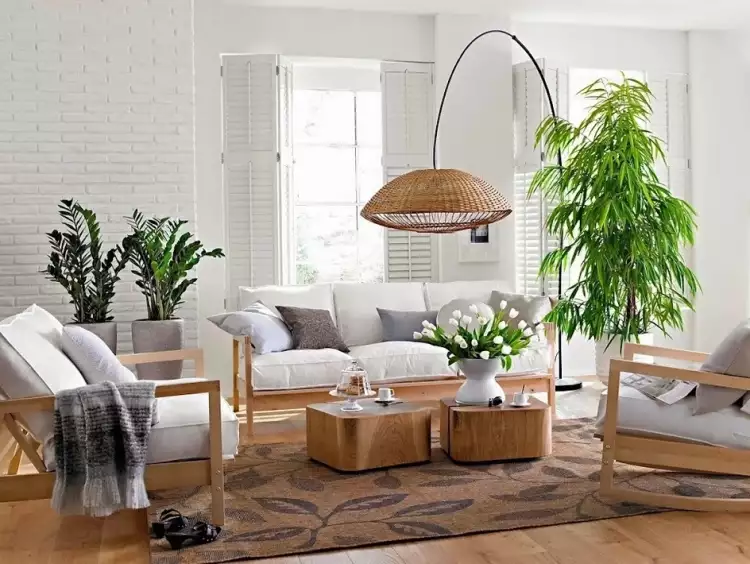 Japandi style in interior design. Japandi style living room interior
Japandi style in interior design. Japandi style living room interior
Key Characteristics and Features of Japandi Style in Interior Design
Japandi style in interior design is based on the Japanese philosophy of wabi-sabi ("modest simplicity") and the Scandinavian concept of hygge. The first idea encourages finding beauty in simplicity and imperfection, where a small flaw gives an object uniqueness and seems to imbue it with a soul. The second idea focuses on the atmosphere of cozy domestic warmth, the charm of long winter evenings spent with family. To create such an interior, it is necessary to free the space from unnecessary elements, fill the rooms with light and air, and instead of elaborate decor and intricate elements, concentrate on the rough textures of natural furniture and finishes.
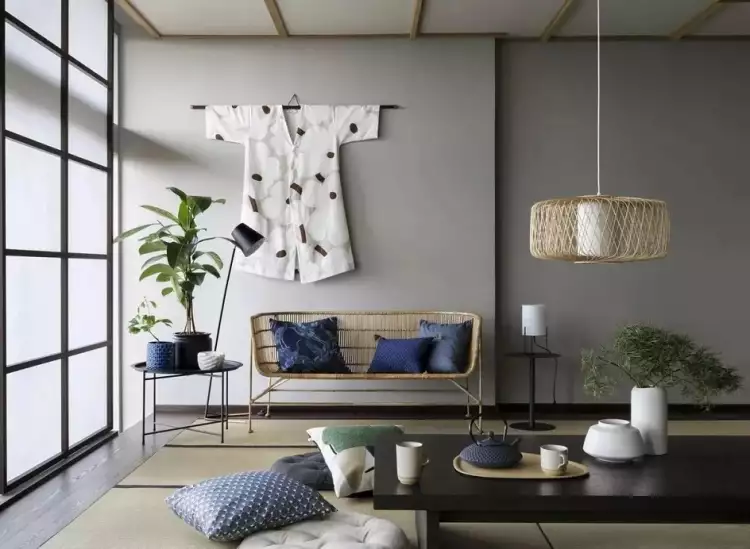 Japandi style in interior design. Interior with minimalist décor in the Japandi style
Japandi style in interior design. Interior with minimalist décor in the Japandi style
The main features of Japandi style in interior design include:
- Natural materials. Wood dominates in the finishes and should be used as much as possible. Dark wood, common in the East, can be combined with light woods popular in Northern Europe. Stone, rattan, bamboo, linen, and cotton are also used.
- Natural tones. Japanese prefer earthy colors like sand and clay, while Scandinavians prefer muted pastel shades. Both love soft white and sometimes use dark paints for a slight contrast. It is advisable to avoid overly bright details and ornaments.
- Minimalistic furniture. It is better to choose furniture with simple geometry, without curved legs or ornate backrests. Preference should be given to closed storage systems with a push-opening mechanism – without handles or unnecessary decoration. Low tables and beds, popular in Japan, can also be used.
- Minimalistic decor. Large live plants and abstract paintings can make the interior cozy and original. In other respects, functional items take on the role of decorations, such as throws, ceramics, and boxes. Accessories can have a slightly imperfect, handmade feel.
- Subdued textiles. Japandi does not embrace ostentatious luxury, so curtains are made from unbleached linen or plain cotton. Bedding, pillows, and throws are chosen following the same principle – without prints, allowing the cozy roughness of natural fabric to take center stage.
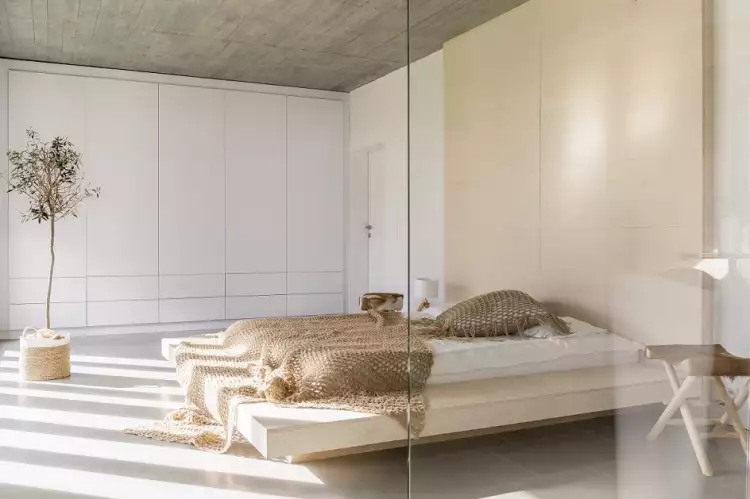 Japandi style in interior design. Japandi style bedroom interior
Japandi style in interior design. Japandi style bedroom interior
The History of Japandi Style in Interior Design
This trend is relatively new: interior design magazines and online resources started paying attention to it in 2020. Since then, it has been growing in popularity and widely spreading. However, the conditions necessary for the birth of Japandi style were formed long ago - 150 years ago, when Japan became an open country for travelers. Scandinavian designers had the opportunity to familiarize themselves with Eastern culture and draw inspiration from it. Traces of this influence can be seen in Danish architecture, furniture, and ceramics from the late 19th to early 20th centuries.
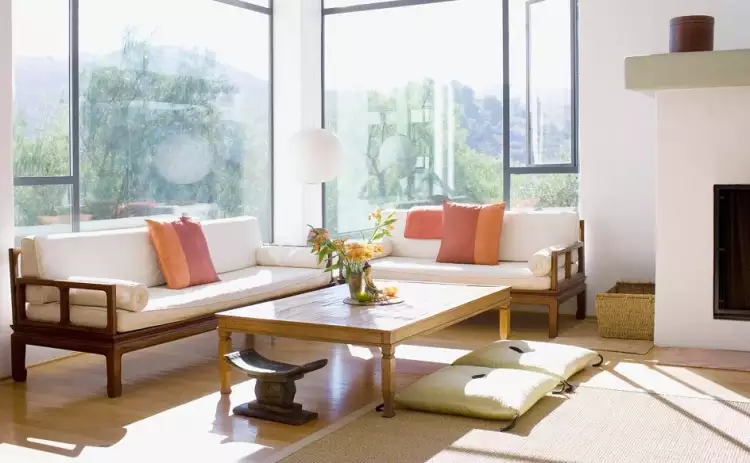 Japandi style in interior design. Japandi Style Lounge Interior
Japandi style in interior design. Japandi Style Lounge Interior
In the second half and at the end of the 20th century, cultural connections between the East and the West became even closer. Design was considered a strong aspect of both regions, and they showed mutual interest in each other. In particular, Danish designer Lars Veien visited the Land of the Rising Sun multiple times, where he found clients and partners. The fusion of wabi-sabi and hygge in one interior style was a matter of time, and it happened now.
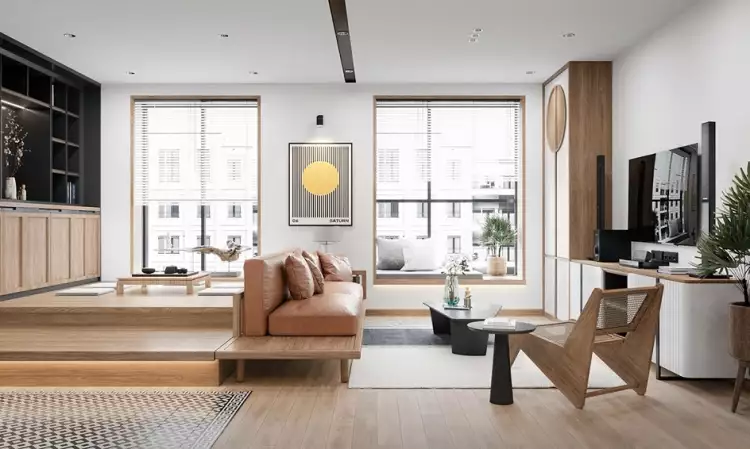 Japandi style in interior design. Living room interior with leather sofa in Japandi style
Japandi style in interior design. Living room interior with leather sofa in Japandi style
Japandi style in interior design encompasses the best of Japanese and Scandinavian aesthetics. It has everything necessary to become a long-term trend - comfort, tranquility, and simplicity, providing a break from the overly eventful modern life. This design looks great both in urban apartments and spacious private houses. The rejection of the superfluous and the use of natural materials align with two global values - conscious consumption and ecological awareness.
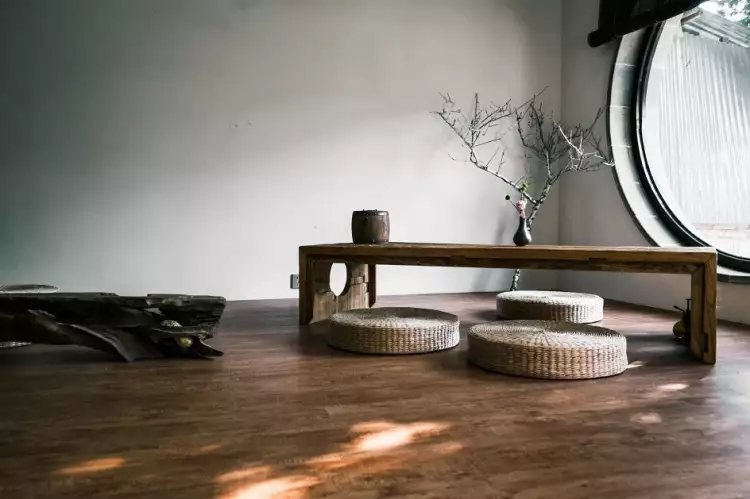 Japandi style in interior design. Interior with Japandi Style Wooden Furnishings
Japandi style in interior design. Interior with Japandi Style Wooden Furnishings
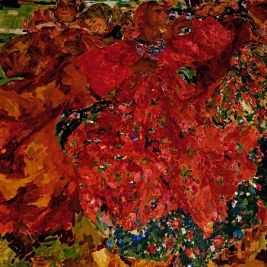 The painting " The Whirlwind" by Filipp Andreevich Malyavin is an inspiring hymn to the beauty and strength of character of Russian peasant women
The painting " The Whirlwind" by Filipp Andreevich Malyavin is an inspiring hymn to the beauty and strength of character of Russian peasant women  Sculpture "The Pietà" by Michelangelo Buonarroti is a iconic work in Catholicism
Sculpture "The Pietà" by Michelangelo Buonarroti is a iconic work in Catholicism  The painting "Menshikov in Berezovo" by Vasily Surikov is a dramatic depiction of the life of the disgraced prince
The painting "Menshikov in Berezovo" by Vasily Surikov is a dramatic depiction of the life of the disgraced prince  Academism is an authoritative, virtuoso, and conservative style
Academism is an authoritative, virtuoso, and conservative style  Carl Fabergé - a Russian jeweler known throughout the world
Carl Fabergé - a Russian jeweler known throughout the world  French Porcelain: History of Development and Top Manufactories
French Porcelain: History of Development and Top Manufactories  Birmingham silver - the beauty and elegance of small forms
Birmingham silver - the beauty and elegance of small forms  Battle genre in painting: heroic battles and anti-war pathos
Battle genre in painting: heroic battles and anti-war pathos  Caravaggism: The Struggle of Light and Darkness
Caravaggism: The Struggle of Light and Darkness  Navigating the Currents: The Tension Between Vintage and Modern Watches
Navigating the Currents: The Tension Between Vintage and Modern Watches